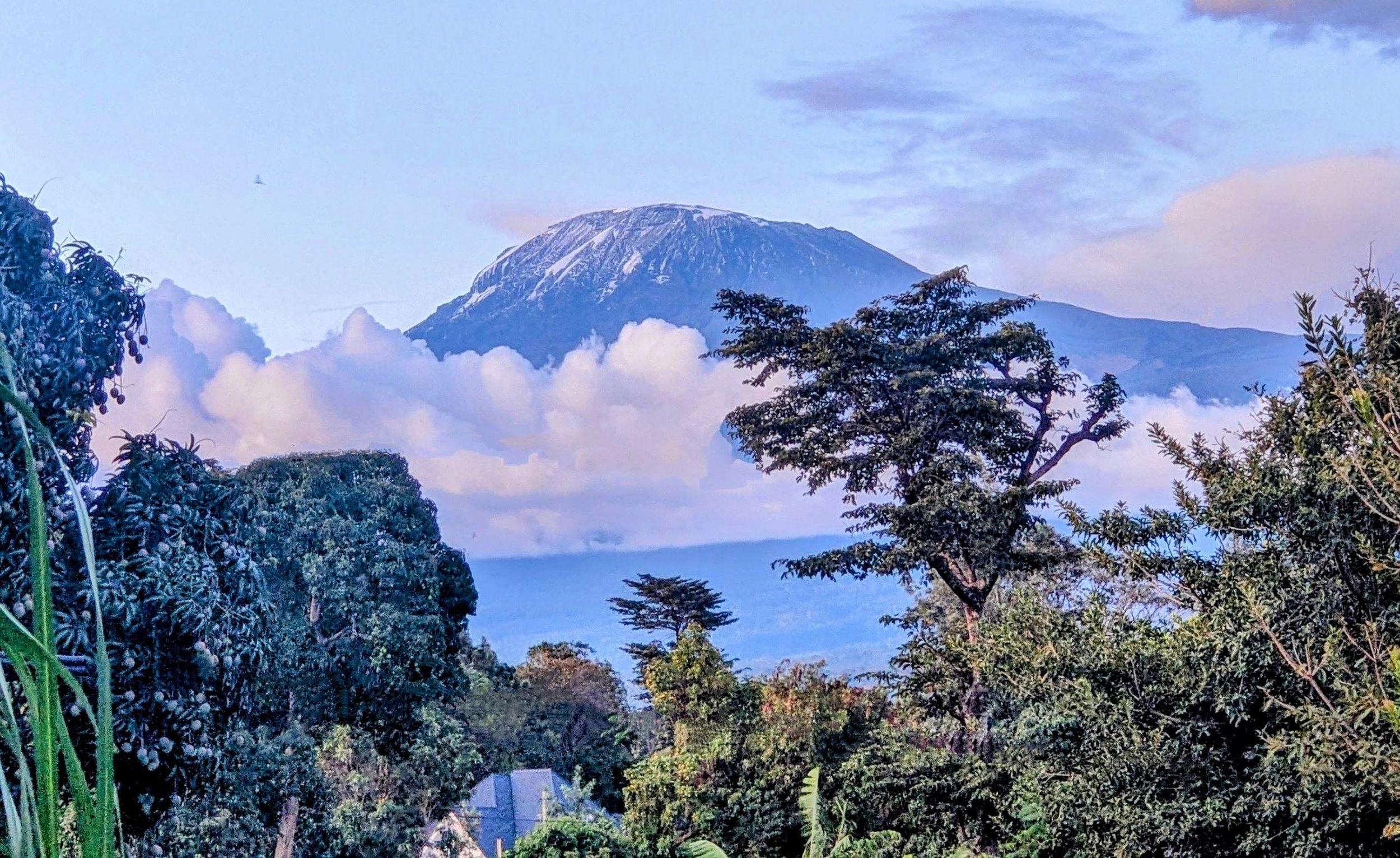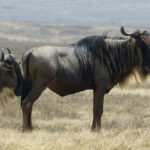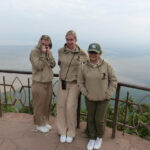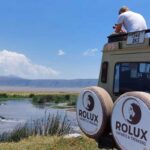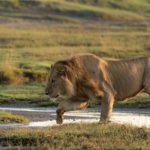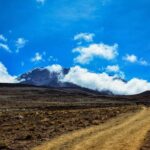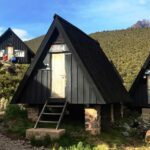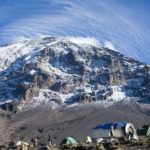Tanzania is home to Mount Kilimanjaro, Africa’s highest peak, which stands as a sentinel over the diverse landscapes that stretch from the Indian Ocean to the edges of the Great Rift Valley. This country’s geographical diversity is astonishing, encompassing savannas, forests, wetlands, and coastal expanses. It’s a place where nature writes its own adventures, with each region revealing a different chapter of this grand natural narrative.
The Serengeti Plains, famous for the annual migration of over two million wildebeest and zebra, speak to the timeless cycle of life and survival. Lake Victoria, Africa’s largest lake, straddles Tanzania’s borders, providing vital resources to the people and ecosystems. Further south, the Selous Game Reserve, one of the largest wildlife reserves in the world, covers more than 50,000 square kilometers and is a testament to the rich biodiversity that thrives within Tanzania’s borders.

Exploring the Diverse Terrains of Tanzania
Tanzania is a land of astounding variety, offering terrains that cater to all kinds of explorers. The country is home to alpine peaks, with Mount Kilimanjaro being the most famous. Alongside this iconic mountain, the Great Rift Valley adds another dimension to the country’s geography. Its geological formations and ancient history captivate anyone who visits. Moreover, the valley serves as a habitat for many animal species.
Lakes in Tanzania provide an aquatic counterpart to its mountainous regions. Lake Victoria, shared with Uganda and Kenya, is the largest lake in Africa. Meanwhile, Lake Tanganyika is one of the oldest and deepest freshwater lakes in the world. These lakes support fisheries and serve as key resources for the local communities. Both lakes also play a significant role in the ecosystems of the areas surrounding them.
In addition to mountains and lakes, Tanzania offers extensive savannas and forests. The Serengeti Plains stretch over 12,000 square miles, hosting the great wildebeest migration. This spectacle attracts tourists from around the globe. The nation also has the Usambara and Uluguru mountains, which are lush with thick forests. These areas are not only beautiful but also vital for water catchment and biodiversity.
Coastal regions add yet another layer to Tanzania’s varied landscape. The country’s coastline along the Indian Ocean is blessed with white sandy beaches and coral reefs. Zanzibar, an island off the coast, boasts tropical charm and historical richness. The coral reefs around the island offer some of the best snorkeling and diving experiences. Tanzania’s coastline is a paradise for those interested in marine life and water activities.
From the Serengeti Plains to the slopes of Kilimanjaro
The Serengeti Plains are one of Tanzania’s most iconic natural wonders, stretching as far as the eye can see. Here, the annual migration of wildebeest, zebras, and antelopes spans over 1,200 miles. This massive movement of animals attracts predators, creating a breathtaking scene of life and death. It’s one of nature’s most dramatic events. The Serengeti is not just about wildlife; it also boasts beautiful landscapes with endless horizons.
Moving from the plains, Mount Kilimanjaro stands majestically as Africa’s highest peak at 19,341 feet. Known as the “Roof of Africa,” this dormant volcano has three volcanic cones: Kibo, Mawenzi, and Shira. Climbing Kilimanjaro is a bucket-list item for many adventurers. The journey up the mountain takes you through five distinct climate zones. Each level offers its own unique flora and fauna.
While the ascent to Kilimanjaro’s summit is a challenge, it rewards climbers with breathtaking views. From the lush green rainforests at the base to the sparse, icy landscape at the summit, the scenery is ever-changing. The mountain’s glaciers and snowfields are a stark contrast to the arid plains below. Hikers often spot unique plants and animals not seen elsewhere. Reaching the top feels like standing on the edge of the world.
These two incredible destinations highlight the diversity of Tanzania’s geography. From the flat, vast plains of the Serengeti to the snow-capped peaks of Kilimanjaro, the country offers endless exploration opportunities. Each location teaches us something new about nature and survival. Whether watching the Great Migration or hiking through Kilimanjaro’s diverse ecosystems, Tanzania never ceases to amaze. It’s a paradise for nature lovers and thrill-seekers alike.
Key Wildlife Reserves and Conservation Efforts
Tanzania is home to some of the most renowned wildlife reserves in the world. The Serengeti National Park, for instance, covers almost 5,700 square miles and is famous for the annual wildebeest migration. This park is not only a tourist magnet but also a major conservation area. It protects many species from poaching and habitat destruction. Conservationists work tirelessly to maintain this delicate ecosystem.
The Ngorongoro Conservation Area is another essential reserve in Tanzania. It encompasses the Ngorongoro Crater, the world’s largest inactive volcanic caldera. The crater is a natural enclosure for a variety of wildlife, including elephants, rhinos, and lions. Unique to Ngorongoro is its integrated approach to conservation. It balances human settlement, wildlife protection, and tourism.
Selous Game Reserve, one of the largest in Africa, covers over 19,000 square miles. This reserve features diverse landscapes such as savannas, forests, and swamps. Selous is a refuge for endangered species like black rhinos and wild dogs. The reserve also supports sustainable tourism and community-based initiatives. These efforts ensure that the reserve’s wildlife population thrives.
Conservation efforts in Tanzania extend beyond reserves to community-based initiatives. Organizations work with local communities to promote sustainable practices. These efforts focus on reducing human-wildlife conflict and preserving natural habitats. Local participation is crucial for the success of these projects. Together, they make a significant impact on Tanzania’s conservation landscape.
Major Natural Attractions Offered by Rolux Safaris
Rolux Safaris offers unique experiences across some of Tanzania’s most awe-inspiring natural attractions. One of the highlights is the Serengeti National Park, renowned for its stunning landscapes and incredible wildlife. Visitors can witness the Great Migration, where millions of wildebeest, zebra, and gazelle traverse the plains. This is a must-see for anyone interested in nature and wildlife. Safaris here offer a breathtaking adventure.
Another major attraction offered by Rolux Safaris is the Ngorongoro Crater. This UNESCO World Heritage Site is the world’s largest inactive volcanic caldera. The crater’s enclosed ecosystem supports an array of wildlife, including the Big Five: lions, elephants, leopards, buffalo, and rhinos. Game drives in this area provide unforgettable views and opportunities for remarkable wildlife photography. It’s a perfect destination for nature enthusiasts.
For those interested in aquatic adventures, Lake Manyara is another exceptional destination. Rolux Safaris arranges trips to this amazing lake, which is famous for its flamingo population and tree-climbing lions. Visitors can also enjoy canoeing and bird watching. The lake’s diverse ecosystem makes it an exciting spot for both relaxation and adventure. Activities here cater to a wide range of interests.
The Selous Game Reserve, one of Africa’s largest wildlife reserves, also features prominently in Rolux Safaris’ offerings. This reserve is less crowded than others, providing a serene experience. Visitors can explore its vast landscapes, which include rivers, lakes, and grasslands. The reserve is home to a variety of wildlife, such as hippos, crocodiles, and wild dogs. It’s an ideal setting for a peaceful but action-packed safari.
Rolux Safaris also takes pride in providing guided tours of Mount Kilimanjaro. Known as the highest peak in Africa, Kilimanjaro offers a once-in-a-lifetime climbing experience. Trekkers can explore the mountain’s unique flora and fauna, found at different altitudes. Each leg of the journey reveals new natural wonders. The sense of achievement upon reaching the summit is unmatched.
In addition to these locations, Rolux Safaris arranges trips to Zanzibar’s beautiful beaches. This island is known for its white sandy shores and rich cultural history. Activities include snorkeling, diving, and exploring historic Stone Town. Zanzibar is a relaxing conclusion to an adventurous safari. It adds a perfect blend of culture and leisure to your travel itinerary.
Key Takeaways
- Tanzania has diverse landscapes, from mountains to plains.
- Mount Kilimanjaro is the highest peak in Africa.
- The Serengeti hosts the Great Migration of wildebeest.
- Lake Victoria is the largest lake in Africa.
- Conservation efforts are crucial for wildlife protection.

